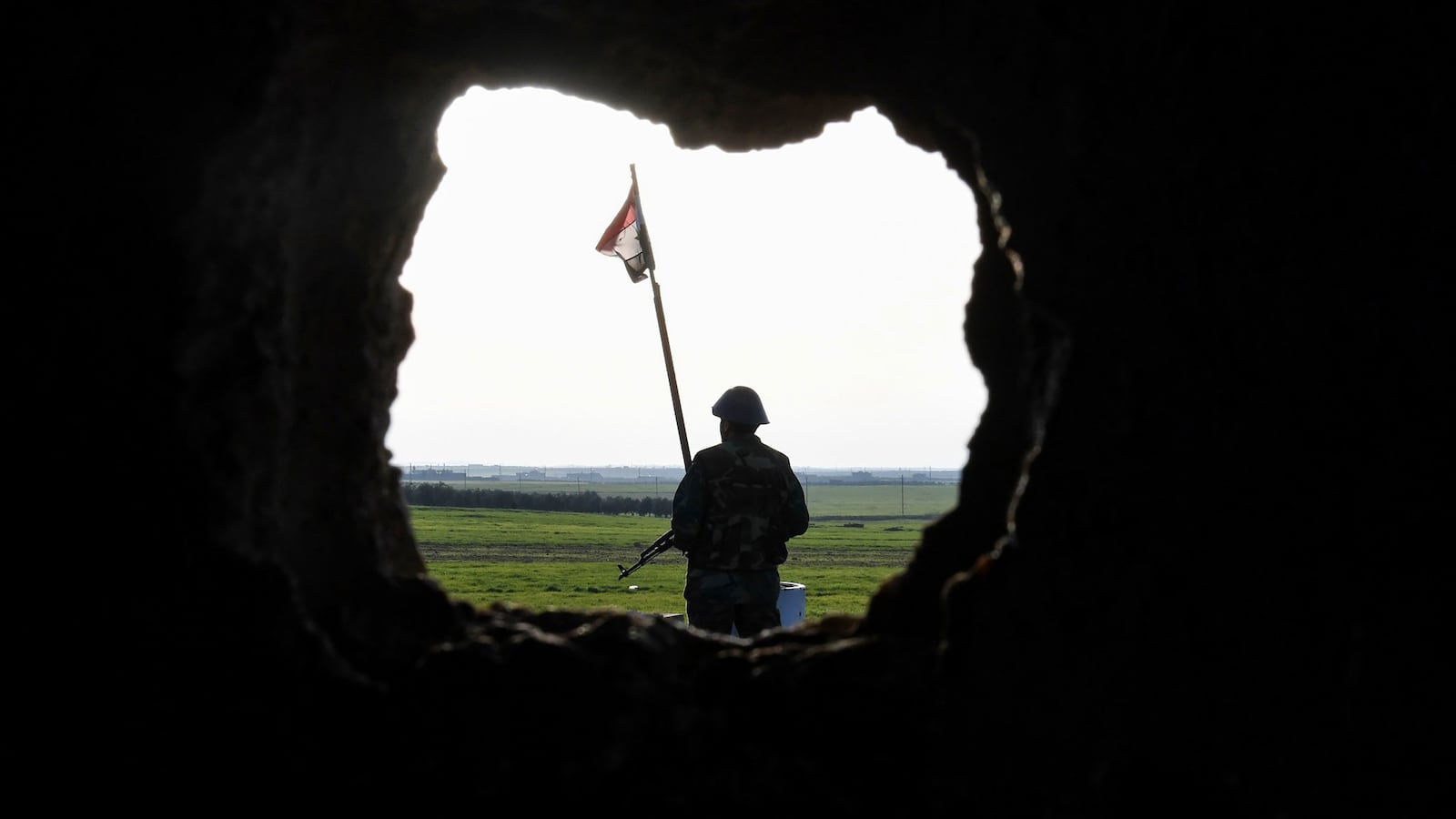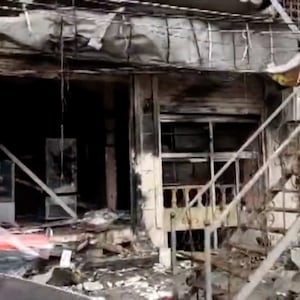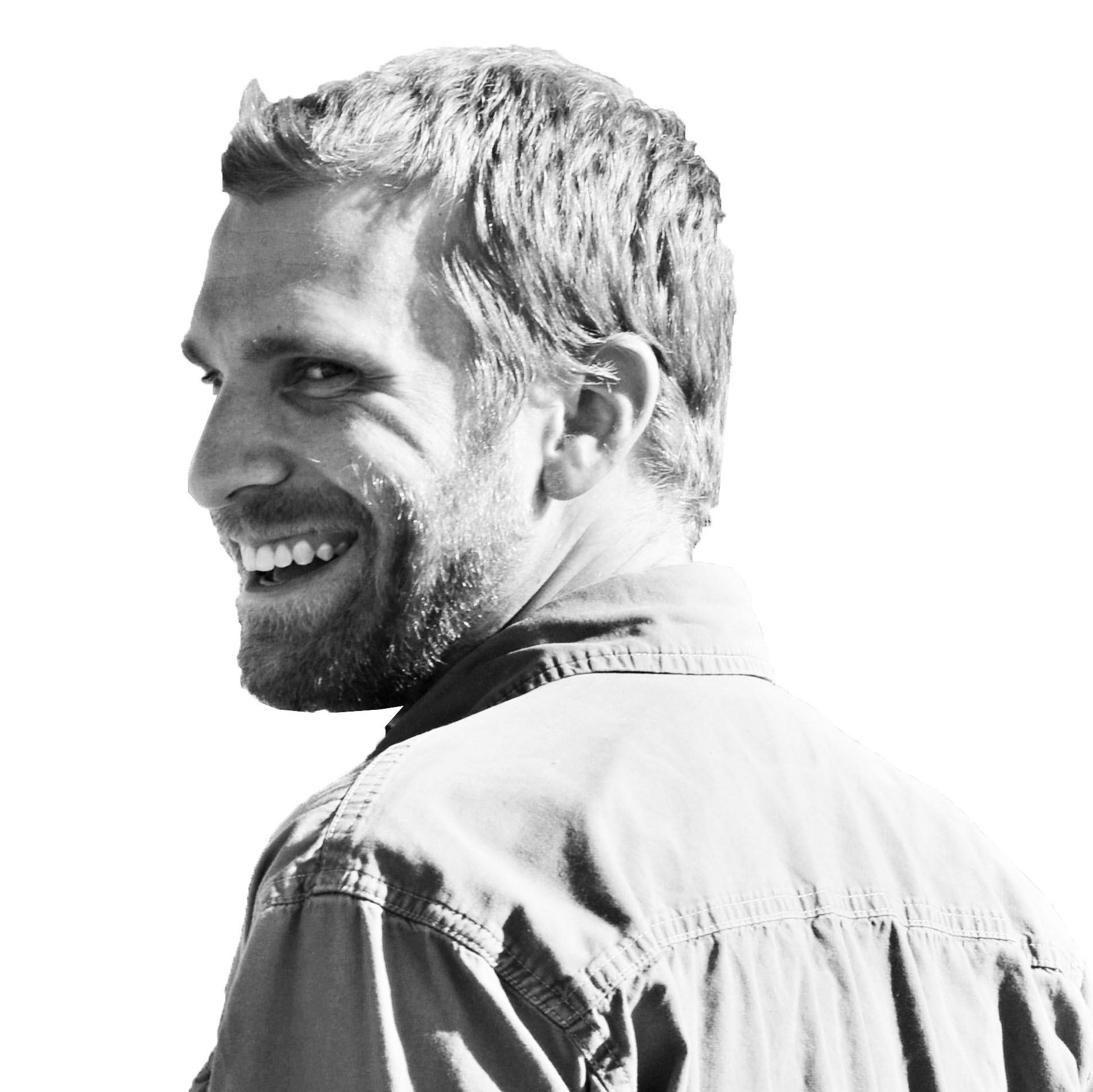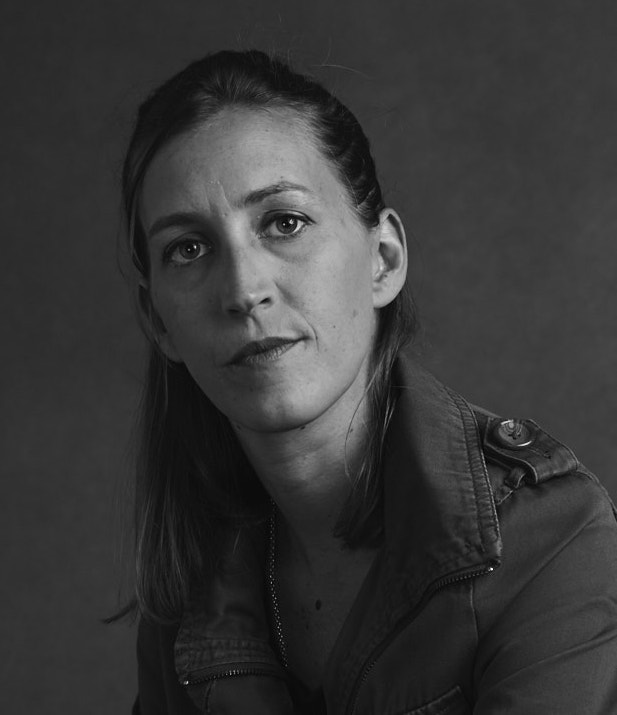QAMISHLO, Syria—An enormous fire raged across several wheat fields outside this town on July 6. It was a dry summer day and dark smoke towered over the countryside as the flames spread across the farmland. Some locals watched in awe at the inferno. Others tried to fight back with shovels and rakes. They had little success. They watched the blaze consume their livelihood. Locals told The Daily Beast that the fire started near Turkish military checkpoints along the border and made its way south across Kurdish farms.
Scenes like this have become commonplace this summer as fires have burned across Northeast Syria (or “Rojava” as it is known to the Kurds and their supporters). They have been particularly destructive this year and suspiciously concentrated in contested territories that make up the lines between between U.S.-backed Syrian Democratic Forces (SDF), Turkish troops and Syrian pro-regime forces—as well as scattered fires near former ISIS strongholds.
Now, as Turkish leaders threaten to invade this region, things could heat up even more.
In December, President Donald Trump declared the so-called Islamic State to be completely destroyed and announced that U.S. troops would immediately leave Syria. After the announcement, forces loyal to the Assad regime in Damascus, and Turkish-backed proxies as well, began massing on the edges of territory held by the Kurdish-led and U.S.-backed SDF.
In fact, even after Trump declared victory, the war against ISIS continued. It wasn’t until March that SDF forces officially seized the last major ISIS stronghold in Baghouz.
Today ISIS cells still remain scattered throughout Syria and Iraq waging a deadly insurgency. And thousands of American and European troops remain in parts of Syria controlled by the SDF hunting down those cells, much to the relief of many Kurds—and the chagrin of the Syrian and Turkish governments.
Last week at a trilateral summit in the Kazakh capital of Astana, Turkish officials met with the Syrian regime’s Russian and Iranian allies. In a joint statement released on Aug. 2 leaders from the three countries promised to work toward ending the savage fighting between Syrian government forces and rebels in Idlib Province while also condemning the “separatist” agenda of the SDF, noting they “rejected… all attempts to create new realities on the ground under the pretext of combating terrorism.”
Throughout the summer the Turkish Army has been massing thousands of troops—including tanks and heavy weapons—along its border with SDF-controlled territory. Over the weekend Turkish officials announced they had notified both Russian and American leaders of their intent to launch a new military incursion into Northeast Syria, which would be the third major Turkish military operation in Syria, following incursions in 2016 and 2018.
On Sunday, Turkish President Recep Tayyip Erdogan proclaimed, "We entered Afrin, Jarablus, and Al-Bab. Now we will enter the east of the Euphrates.”
American diplomats hastily worked out a new agreement with Turkish officials that seems to have halted the offensive—at least for now.
While the U.S. military presence has prevented a full scale invasion of Northeast Syria up to this point, SDF commanders told The Daily Beast that both Turkish and Syrian regime forces have turned to sneakier tactics as they allegedly burn crops, collaborate with jihadist groups, coordinate bombings and even try to bribe some American-backed fighters to change sides in an effort to destabilize the region and make it more vulnerable to their influence.
While some of the fires plaguing Northeast Syria this summer are likely natural, a huge portion have started near military positions, on contested borders and along roadways, and frequently in multiple places at once.
In places like Tirbespiye or on the road to Hasakah, the scene is almost apocalyptic—miles of black fields have replaced the bright gold crops.
"Most of the fires in our areas are caused by the Syrian regime, Turkish intelligence, and ISIS cells," said Salman Barudo, joint chairman of the Agriculture and Economic Commission for the U.S-backed and Kurdish-led administration that now oversees much of Northeast Syria.
According to the region’s Economic and Agricultural Authority, the crop losses brought on by fires in Northeast Syria this summer are currently estimated to be more than 19 billion Syrian pounds (about $33 million). The fires have so far destroyed 44,788 hectares (more than 110,000 acres), killed at least 10 people and injured many more—including both military personnel and civilians.
In the province of Deir Ezzor to the south, the Syrian military and allied Iranian-backed militias allegedly burned crops and tried to convince locals not to sell them to the Kurdish-led self-administration through a mix of counteroffers and threats.
“It’s an insidious attempt by the [Syrian] government to undermine the livelihood and base of support for Rojava,” says David Phillips, a former diplomat who is now the director of the Peace-Building and Human Rights Program at Columbia University's Institute for the Study of Human Rights. “It highlights the precarious position of Kurds stuck between Turkey to the north and aggression from the [Assad] regime.”
In the Syrian city of Raqqa the devastating impact of the war is readily apparent. Much of the city remains rubble. Raqqa has been highly contested throughout the Syrian civil war. It was first controlled by factions of the Free Syrian Army before the al-Qaeda aligned Jabhat al-Nusra took over. ISIS took the city in January 2014 and made it the Caliphate’s capital. SDF forces finally seized Raqqa in 2017 with the backing of Coalition forces.
While Western military leaders touted their aerial bombing campaign as “the most precise” in history, much of the infrastructure has been destroyed and Amnesty International estimates Coalition forces killed more than 1,600 civilians.
Small businesses are slowly setting up shop even among the devastation, and children play in the streets—but the recovery remains slow. International funding for reconstruction has been scant. ISIS also remains a problem, with sleeper cells regularly detonating bombs and ambushing local officials. But SDF officials stressed that ISIS isn’t the only group with cells planting bombs in the city.
“There are some problems with the regime, they have been carrying out bombings to try to scare people and make them flee the city,” explained a commander in the Raqqa Internal Security Forces who is known by the nom de guerre Mohammed Raqqa. A Kurd, he took on the city’s name because he was born and raised in Raqqa and has been overseeing its internal security for about a year. “Lately the regime has been behind more bombings here than ISIS, but the reduction in ISIS bombings might be because they want to change tactics.”
Security officials in Raqqa told The Daily Beast that coalition special operations forces have supported local forces by helping them track cells and bombers, providing logistical support and aerial surveillance.
SDF leaders say they have gradually tracked the regime’s operations through interrogations of suspects and analyzing patterns in the attacks. Mohammed explained that ISIS bombings are typically more complex and coordinated, usually involving multiple explosive devices and occasionally accompanied by guerrilla-style attacks against security forces. By contrast regime operations usually only involve one bomb and perpetrators quickly flee the scene.
The regime’s campaign started “after President Trump announced that U.S. troops would withdraw,” said SDF spokesperson Farhad Youssef. He added that the Syrian government’s covert bombing campaign has particularly centered on former ISIS strongholds like Raqqa, Manbij and Deir Ezzor that have struggled to rebuild and that regime agents hope to exploit tensions between Kurds and Arabs. “The regime wants to discredit the coalition and the SDF and send a message to people that we can’t protect them.”
SDF members admitted that they initially struggled to gain the trust of locals in Raqqa when they first arrived in the city, but insist that they have slowly made inroads. Today most of the city’s internal security force is made up of Arab members, many of them locals from the area.
Mohammed said the cells carrying out bombings on behalf of the regime seem less driven by ideology or loyalty to Assad and more motivated by financial incentives. When caught, members generally surrender easily and talk readily. “We have caught several people who confessed that they work for the regime and that they took money,” Mohammed said. “Lots of people are coming back [to Raqqa], but there’s no opportunities for work.”
Members of the Raqqa Internal Security Forces allege that on some occasions regime agents have used children, both boys and girls and usually between the ages of 11 and 16, to plant bombs before detonating them by remote control. “They tell the children ‘go take this bag to this place’ and that they’ll give them cigarettes, buy them clothes or give them money,” Mohammed explained. “Then after the explosion a lot of times they don’t even actually pay them.”
SDF personnel said that many of the regime attacks target wealthier neighborhoods in an effort to drive away entrepreneurs and other educated professionals.
“The reconstruction is what’s most important. Half the city has no electricity. What we need is real support, financial support, to rebuild the city,” says Mohammed. “There are some organizations working, but they’re limited—they need international organizations to support them.”
Amid continued bombings the Syrian government has also been conducting a simultaneous propaganda campaign with messages suggesting that Syrian troops will try to retake control of Raqqa—a notion that a portion of the city’s frustrated residents seem increasingly open to. “There’s a sort of cooperation between Daesh [ISIS] and the regime in that they don’t want stability here,” Mohammed asserted.
Mohammed believes ISIS and the regime have common interests, but said that he doesn’t necessarily believe the Syrian government and ISIS are directly coordinating in this case, though Syrian regime defectors have admitted to past cooperation with the group and as recently as last year members of the Druze minority accused the regime and Russia of enabling the militants.
Mohammed said he does have reason to believe ISIS has directly benefited from Turkish interventions and is using enclaves held by Turkish troops and their allied militias. “I believe most of the [ISIS] cells are in the city, but some are coming from outside territories, especially Jarabulus and the Turkish areas, to make instability.”
As Turkish troops began their military buildup along the border video emerged purportedly showing a Kurdish member of the SDF in Manbij abusing Arab residents and has widely circulated on social media. It wouldn’t be the first time SDF members got caught mistreating civilians.
In February 17, 2018 a group of U.S. Marines in Deir Ezzor provided care to badly wounded Arab civilians as angry Kurdish SDF fighters tried to stop them from providing treatment, leading to a violent confrontation that night that left one Kurdish fighter dead and U.S. Marine Sgt. Cameron Halkovich injured.
However the Manbij Military Council—which is made up of both Arabs and Kurds along with other ethnicities—insists that the uniforms in the recent video are wrong and that it’s a product of Turkish government propaganda.
The Syrian Observatory for Human Rights, which has been critical of what it considers heavy-handed tactics and abuses by the SDF in several parts of the country, agrees the video is likely faked and that the timing isn’t a coincidence. “The Syrian Observatory rejects all forms of torture and abuse against the Syrian citizen by any party,” it said in a statement. “However, such fabricated videos in primitive ways which appear… at a time when Turkey is preparing to launch a military campaign east of Euphrates, aim to create an Arab-Kurdish strife.”
In the al-Hol displaced persons camp, where SDF authorities have housed suspected families of ISIS fighters since the Battle of Baghouz, there are almost daily attacks on the camp’s staff and aid workers by residents. More than 73,000 people currently live in the camp and some are vocally eager for the prospect of a Turkish invasion, seeing it as a potential opportunity to stage large scale uprisings and escape. Foreign “ISIS brides” seem particularly enthusiastic. “[The Turkish Army] will get here, and they will liberate us,” an American woman in al-Hol who didn’t want to reveal her real name but who goes by Umm Sofia told The Daily Beast.
“If the coalition withdrew, we would face problems from both Turkey and the Regime,” said Mohammed. “Both would attack from the North and from the West.”
When the war in Syria began in 2011 after forces loyal to President Bashar al-Assad fired on Arab Spring activists, the Kurdish-led Democratic Union Party decided not to side with either the regime or the opposition despite the government’s long history of repressing the Kurds. Instead they pursued what they called a “third way”—their own “Rojava Revolution” aimed at all people and not just Kurds.
The goal was to create an autonomous region with a decentralized governing structure based on democratic confederalism and in 2012 some Syrian Kurds began forming “people’s protection units” as self-defense forces—better known as the YPG. Their ideology aligns closely with the militant Kurdistan Workers Party (PKK) in Turkey and Ankara considers the YPG to be an extension of the insurgency in its own Kurdish regions.
Despite early battles in 2012, for much of the conflict the regime and the YPG largely avoided direct confrontation with each other—despite occasional clashes in cities like Qamishlo where both sides control different sections of the city. They both fought against Sunni Arab militant groups that were often supported by Turkey and that both considered enemies. But regime hardliners still viewed the Kurds’ ambitions to break away from their control as a direct affront to their authority and as a long term threat.
During the bitter fight for the town of Kobani along the Turkish-Syrian border in 2014 the YPG formed a united front against ISIS with a few Free Syrian Army factions and other armed groups, fighting the militants as American jets pounded jihadist positions. The Kurdish guerrillas and their new Arab allies (with some prodding by American officials) formed the Syrian Democratic Forces (SDF) a year later.
The new multi-ethnic alliance of armed groups raised alarms in both Ankara and Damascus—especially after the Kurdish-led force began receiving an influx of overt western military assistance in the form of arms, advisers, vehicles, and tactical air support.
Turkey has continued backing several rebel groups, though some Syrian activists and former rebels have accused Ankara of using Islamist fighters to snuff out moderate and pro-democratic elements of the Free Syrian Army to turn it into a Turkish proxy force. Today Turkish-backed militants continue to be a thorn in the side of the regime in Idlib, home to millions of displaced Syrians and the scene of what’s been the bloodiest fighting in the country lately.
This weekend an uneasy ceasefire took hold in the embattled province until Syrian forces resumed aerial bombings on Monday. Syrian and Turkish troops have clashed violently around Idlib, most recently in June when Turkish forces shelled Syrian troops in retaliation for a Syrian government attack that killed a Turkish soldier. However, when it comes to the Kurds in Northeast Syria, Ankara and Damascus’s goals seem to overlap.
In January 2018, Ankara launched the “Olive Branch” operation. Turkish troops and allied Syrian militias invaded the Kurdish-held city of Afrin, justifying it as an operation against “YPG terrorists.” The bloody campaign displaced thousands of people and numerous Human Rights groups accused Turkey of war crimes against the Kurds.
Displaced Kurds have since accused Turkish forces of trying to “Arabize” the area by moving Arabs and Turks into formerly Kurdish and mixed neighborhoods. Ankara’s goal seems to be to annex Afrin into Turkey as authorities issue residents Turkish ID cards, raise Turkish flags in institutions and schools, and have destroyed Kurdish monuments.
During the battle for Afrin a handful of pro-regime fighters actually came to the aid of the Kurdish defenders to fight Turkish troops. But since the battle’s conclusion both parties seem to have agreed to a new approach. “After the Afrin war and until now there have been meetings between Turkey and the regime intelligence,” a senior SDF commander told The Daily Beast on the condition of anonymity. “According to our information a number of times Syrian intelligence went to Turkey, and Turkey has come to Syria. A month ago they had a meeting in Afrin.”
Though Erdogan has publicly called for the destruction of the Syrian regime, he and Assad seem to have an understanding of sorts when it comes to the Kurds. “Even though Erdogan is rhetorically committed to transitioning the regime, that coordination between Damascus and Ankara has been going on for years,” Phillips argued. “And it will continue because Turkey insists that the regime complies with its offensive against the Kurds.”
The enmity between Turkey and the SDF has put Washington in a bind. Turkey is a NATO member and historically a close partner of the United States. After SDF troops took the city of Manbij with Western help, U.S. troops began coordinating patrols along the border with the Turkish military and American diplomats began working with Ankara and Kurdish leaders to negotiate a “safe zone” that would keep Syrian Kurdish fighters away from the Turkish border.
But Turkish proxies have allegedly fired on U.S. troops near Manbij and the Turkish military recently acquired Russian missiles over the objections of American officials. The United States has since taken steps to cut Turkey out of the F-35 jet program. While American officials seem to have convinced the Turkish military not to launch its latest proposed offensive, the alliance is increasingly strained.
Syrian Kurdish leaders, uncertain about their future since Trump announced the withdrawal of U.S. forces, reached out to the regime in Damascus to open talks shortly after Trump’s declaration. The two groups have long communicated through back channels. However, the potential loss of American military support for the Kurds has undercut their leverage, and seems to have made the regime less interested in negotiating.
“The Kurds are actively seeking mediation from international mediators. It’s the regime that is reluctant to talk to them,” explains Phillips. “[The regime] discovered from their experience elsewhere in the country that they can use overwhelming force with Russian and Iranian backing to get the opposition to kneel and succumb to their demands.”
Even as Turkish-backed rebels and Syrian government forces continued sparring in Idlib, they have both kept one eye on their American-backed enemies in Northeast Syria waiting for an opportunity to strike. “Let me be clear: If the U.S. withdrew, Turkey and Syria would collaborate in an offensive against the Kurds and commit terrible atrocities in the Northeast,” says Phillips.
The oil rich province of Deir Ezzor may be one of the most volatile places in SDF-held Syria. It was the last stronghold of ISIS, where many fighters made their final stand at Baghouz. It’s also where American special operations troops fought a fierce battle against a force of Russian mercenaries and pro-regime fighters last year. The ousting of ISIS from its last stronghold in Baghouz has made the situation even more complex. Today coalition forces, SDF fighters, Russian troops and contractors, the Syrian army, Iranian agents and ISIS cells all operate within the city of Deir Ezzor and throughout the province.
For months, some Arab residents have held protests against the SDF. Locals have lodged complaints about a lack of services, an ailing economy and frustration with a security situation that remains volatile as attacks and bombings target both civilians and local forces. All the while Coalition special operations troops conduct raids against suspected ISIS cells on an almost daily basis, often alongside SDF fighters.
“The coalition forces, especially the British forces, started operations to capture ISIS members in the area and they killed civilians in the process,” said Abu Kahwla, an Arab SDF commander. “Of course people mistake the coalition forces with the SDF and the media say they are all the same, they don’t understand this is two different things.”
Kahwla, who says he commands roughly 11,500 SDF fighters in Deir Ezzor, told the Daily Beast one of the greatest challenges he and his men face is the wide-ranging—and sometimes shifting—mix of ethnic groups and tribes in the area. For instance, there is now a significant presence of Shiite Muslims. For years Iranian-backed militias have sought alter Syria’s demographics to bolster support for the regime by displacing Sunni Arabs and Kurds who opposed Assad and repopulating towns with Shiites.
“This has been a long-time project for Iran,” explains Kahwla. “They started years ago to have influence in this area, and the Shiite population is growing.” Kahwla also said that outside forces are trying to bribe tribal leaders to turn them against SDF. “They offered million of dollars, even to me,” he noted. “This strategy is not just the regime, also Iran is doing the same: offering money to different clans.”
Kahwla doesn’t mince words in accusing both the regime and regional powers of using militant groups as proxies to advance their interests and undermine the SDF. “Everybody knows that, they use Daesh sleeper cells to bomb cities like Hasakah, Manbij, and even here. The last one was on July 11,” he said. “They also use other groups such as Jabhat al Nusra to make bombing campaigns against the SDF and weaken their position with the people.”
But ultimately Kawhla said that the SDF can’t solve Deir Ezzor’s problems, and that in many ways the people don’t really want them to. “Everyone in Deir Ezzor wants self-rule. They don’t want an external force to come and rule them,” he explains. “They want to have a self-administration, this is why we got initial support, because the aim of SDF is exactly that. But we are military and not a political force, so now we are waiting for the council to step up.”
Kawhla said he sees reason to be optimistic about the future, but that conflicts between outside powers playing out in Syria continually thwart local efforts. “All these external forces, Iran, Russia, Turkey, even America, should stop interfering in our affairs,” he said. “Each day they spend in our country they force us to work for at least another year.”
However, as international players vie for control of strategic Syrian oil fields it’s unlikely that meddling will stop soon. It’s also why, despite talk of American withdrawal, U.S. troops may be in Syria for a very long time. “I think that the U.S. has a strategic objective, has a strategic goal, in maintaining an association with the Syrian Kurds,” said Phillips. “Otherwise the U.S. has no friends or allies in Syria and can’t influence events. That doesn’t mean that the U.S. won’t downsize, but I can’t imagine a full withdrawal.”









